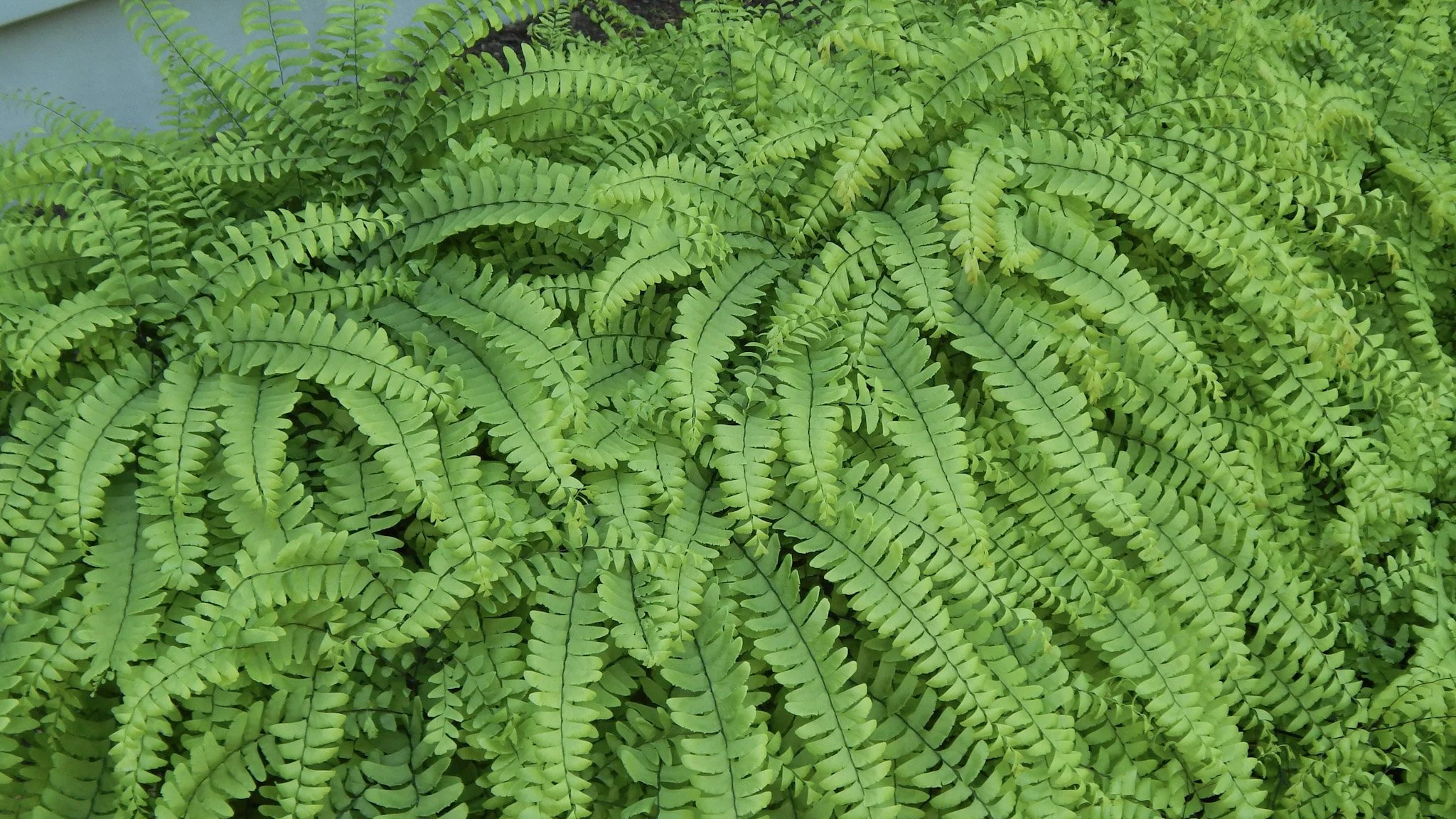Biology 2110, Grover - Iowa State Exam 3 Prep
1/186
Earn XP
Description and Tags
Fungi, Plants, Lichens
Name | Mastery | Learn | Test | Matching | Spaced |
|---|
No study sessions yet.
187 Terms
What is the study of fungi called?
Mycology
What Kingdom is Fungi typically included in?
Plant Kingdom
What type of structure does fungi have?
Filamentous body
What type of metabolism does fungi have?
Heterotrophic (Consumes other organisms for nutrition)
What type of cell wall material does Fungi have?
Chitin
Who does Fungi share a common ancestor with?
Animals
Can fungi be unicellular?
Yes, some fungi are unicellular, such as yeasts.
Can fungi be multicellular?
Yes, many fungi are multicellular.
What are fungi composed of?
Long, thin, filaments called hyphae and/or mycelium
What size surface area do fungi have?
Fungi have a large surface area to increase absorption (Mycelium)
What parts of fungi are metabolically active?
All parts of fungi are metabolically active
How do fungi digest?
They secrete exoenzymes to externally digest immediately after landing on substrate.
What is plasmogamy?
When haploid cells from two different mycelia fuse to form a heterokaryotic cell with two or more nuclei. Fuse Cytoplasm

What is karyogamy?
The nuclei fuse to form a diploid (2n) zygote. Fuse nuclei

What happens during meiosis in fungi?
Haploid (1n) spores are formed.
What happens during germination in fungi?
A multi-cellular mycelium is formed.
What is the order of events in sexual reproduction?
Plasmogamy → Heterokaryotic Stage → Karyogamy → Zygote → Meiosis → Spores → Germination
What is the order of events in asexual reproduction?
Mitosis → Spores → Germination → Mycelium formation
What is fungi’s typical ploidy?
Heterokaryotic
What happens during asexual reproduction in fungi?
Haploid spores are produced by haploid hyphae
What is the first step of fungi sexual reproduction?
Cells of different mating strains fuse (heterokaryotic)
What is the second step of fungi sexual reproduction?
The fruiting body develops (Heterokaryotic stage)
What is the third step of fungi sexual reproduction?
Nuclei fuse to produce a diploid cell
What is the fourth step of fungi sexual reproduction?
Haploid spores are produced by meiosis
How are phyla of fungi differentiated?
The different reproductive structures
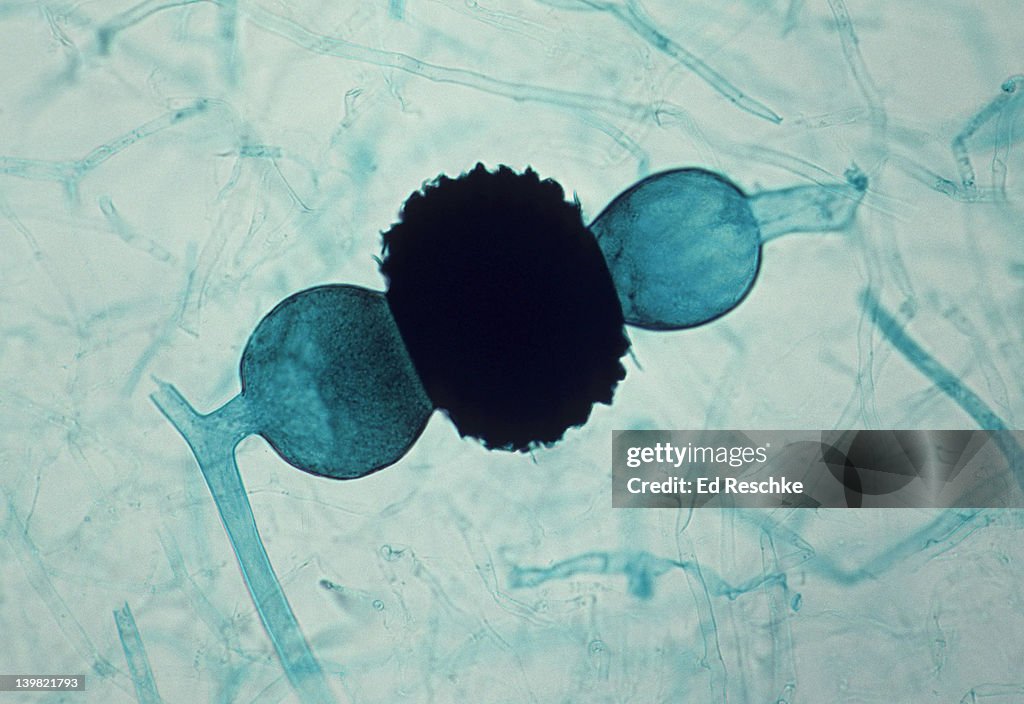
What is this and how many spores does it have?
Zygosporangium, 1
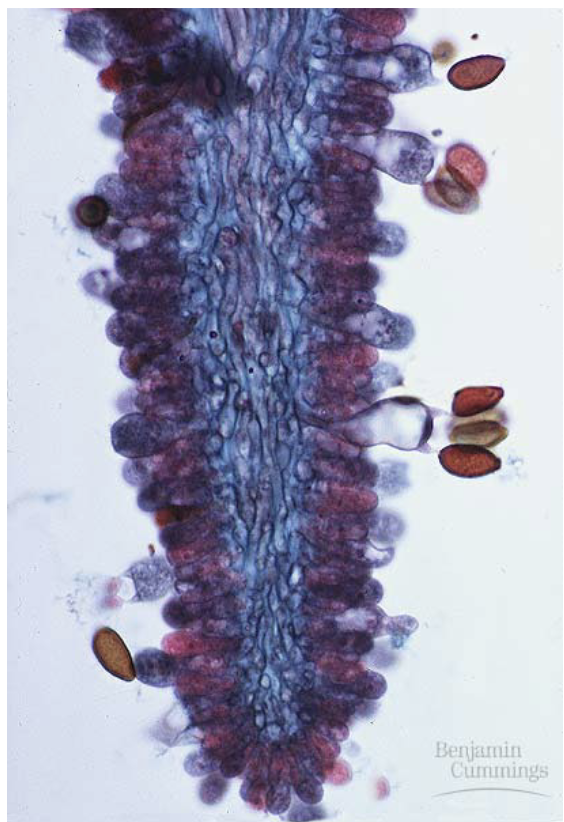
What is this and how many spores does it have?
Basidium, 4
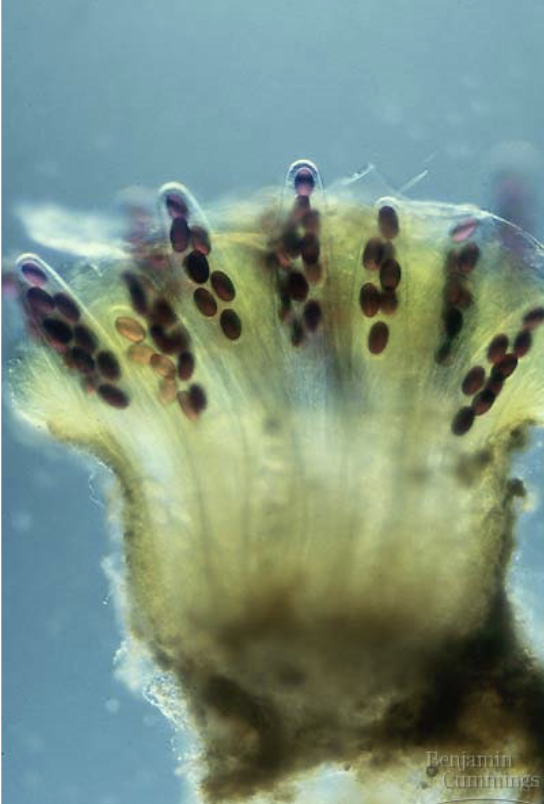
What is this and how many spores does it have?
Ascus, 8
What is the state of the hyphae in Zygomycota?
The hyphae in Zygomycota are coenocytic or aseptate.
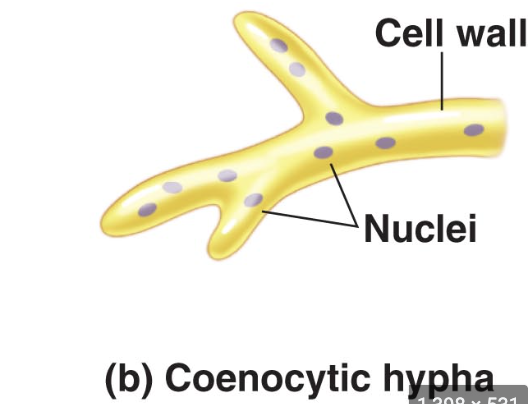
What is the dominate method of reproduction in Zygomycota?
Asexual, only reproduces sexually under poor conditions
How many known species are there of zygomycota?
1,050
How are the spores typically produced in zygomycota?
Haploid spores are produced asexually in sporangia
What are special traits of zygomycota?
Known for food spoilage, many are saprophytes (organisms that feed on decaying matter)
How many known species are there of Chytridomycota?
750 species
What are some notable relationships of Chytridiomycota?
Mutualistic chytrids live in the guts of herbivore animals to help digest plants, parasitic chytrids infect many species of plants and animals
What is the state of the hyphae in Chytridiomycota?
Coenocytic
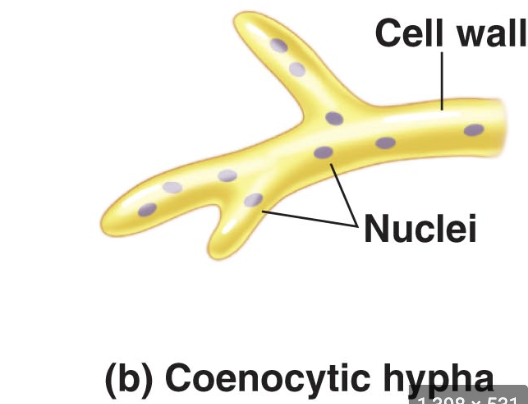
What is unique about the spores on Chytridiomycota?
They are the only extant group of fungi that have flagellated and motile spores.
How many known species does Glomeromycota contain?
200 species
What is a notable relationship of glomeromycota?
Forms mutualistic relationships with plant roots
What are arbuscular mycorrhizal fungi?
Fungi that form mutualistic relationships with plant roots
What % of plants have mycorrhizal relationships with Phylum Glomeromycota?
90% of all plants
What is the state of the hyphae in glomeromycota?
Coencytic/Aseptate
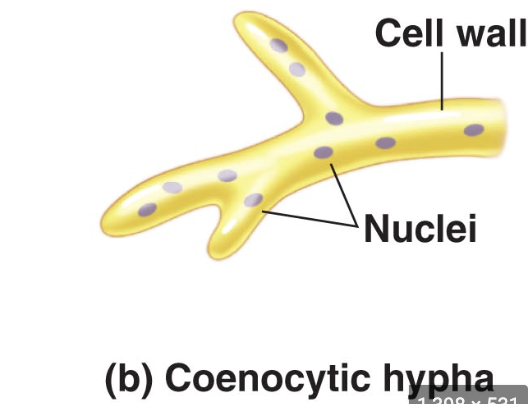
What are some unique traits of chytridiomycota?
Mainly aquatic, decompose cellulose
How many known species are there of basidiomycota?
32,000
What is a notable relationship of basidiomycota?
They form mutualistic relationships with plants through mycorrhizae. (ectomycorrhizal)
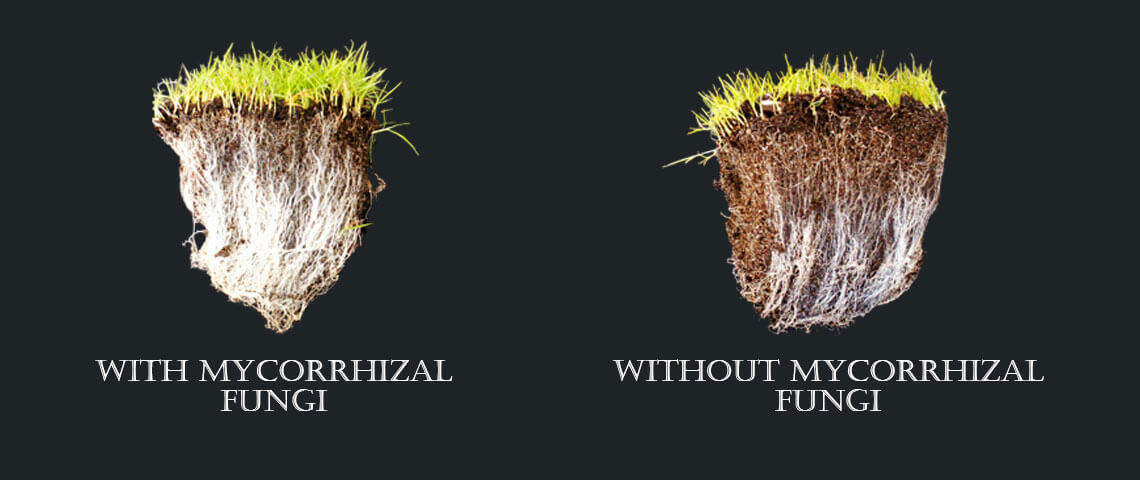
Where are the spores produced in basidiomycota?
Haploid spores produced in basidia
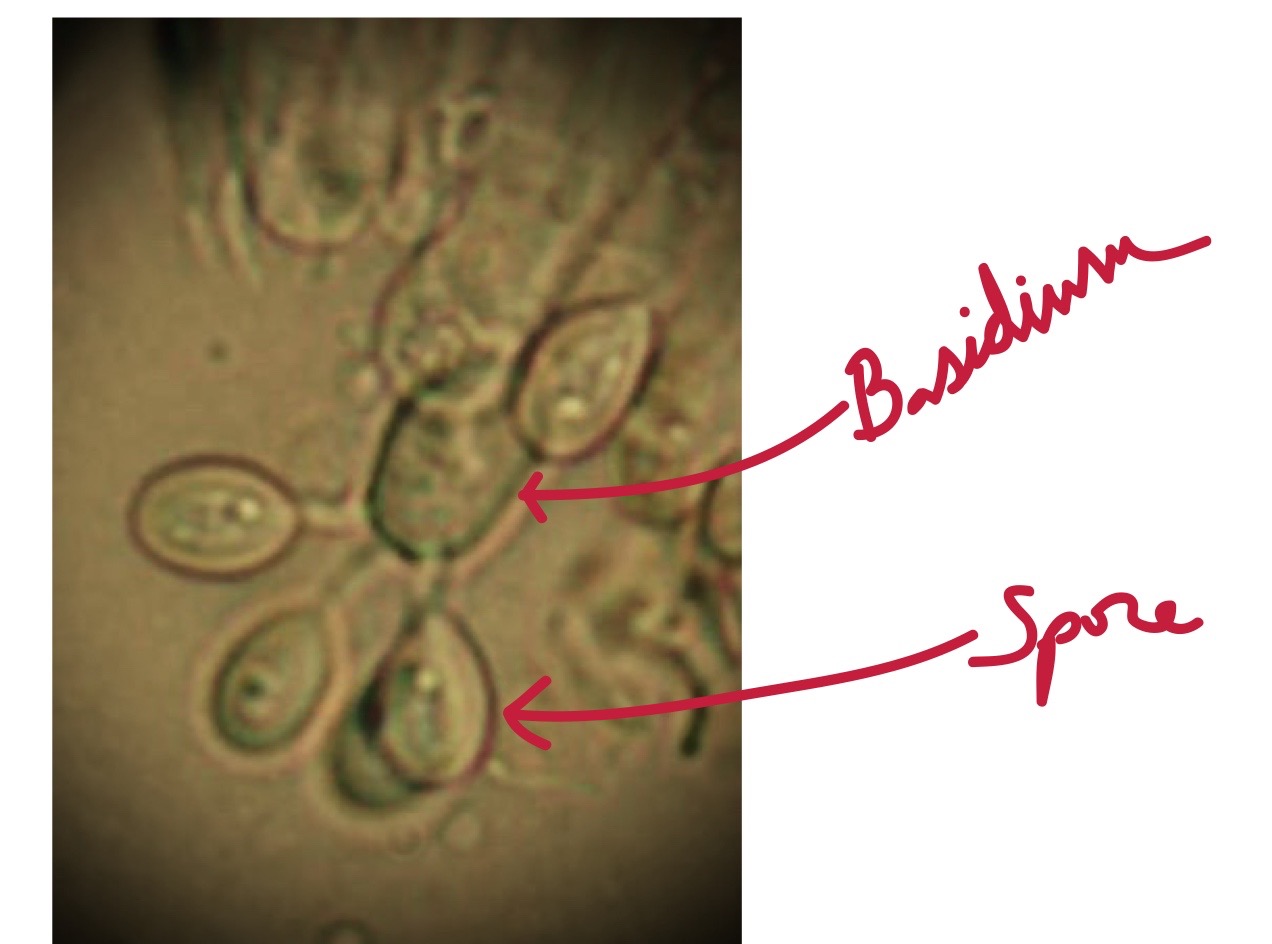
What is a unique trait of basidiomycota?
Lignin decomposition, edible, toxic, and hallucinogenic
What is the state of the hyphae in basidiomycota?
Septate (Has walls)
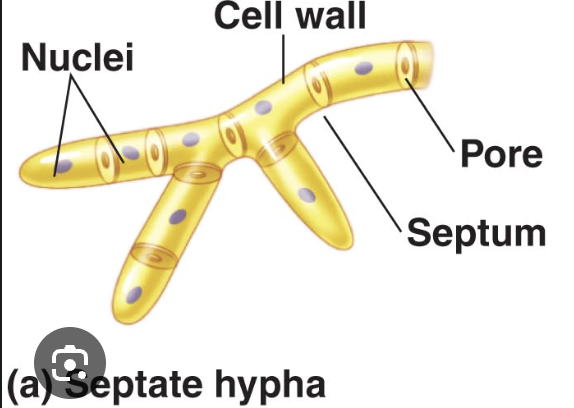
How many known species are there of ascomycota?
64,000 species
What are some notable relationships of ascomycota?
Mutualistic with lichens (algae/bacteria) and tree roots.
Where are the spores formed in ascomycota?
Haploid spores are produced in the sac-like asci
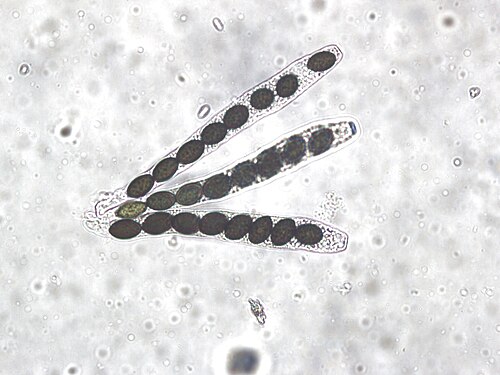
What are some unique traits of ascomycota?
Includes lichens, bioindicators of air pollution
What is the state of the hyphae in ascomycota?
Septate
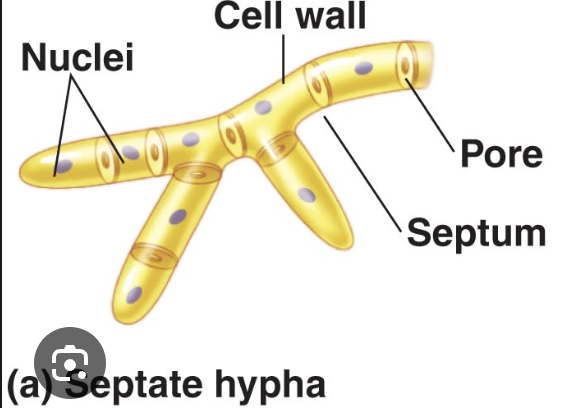
What are some shared characteristics between plants and protists?
Multicellular eukaryotes, photosynthetic autotrophs, cellulose cell walls, chloroplasts
What are advantages of the terrestrial environment?
More exposure to sunlight, atmosphere with abundant CO2, rich mineral soil, few herbivores and pathogens initially
What are the challenges of the terrestrial enviornment?
Desiccation, ultraviolet radiation, support for the body of the organism, getting water and minerals, reproducing in dry enviornments
What is desiccation?
Loss of water to the air
How was the challenge of desiccation to the terrestrial environment remedied?
The cuticle, a water-tight, waxy layer that covers the above ground parts of the plant
How was the challenge of ultraviolet radiation to the terrestrial environment remedied?
The cuticle, a water-tight, waxy layer that covers the above ground parts of the plant. Acts as a sunscreen.
How was the challenge of no support for the plant body to the terrestrial environment remedied?
Lignin in vascular tissues, provides structure and support
How was the challenge of getting water and minerals to the terrestrial environment remedied?
The xylem, dead hollow cells that form “pipes” for water and mineral transport
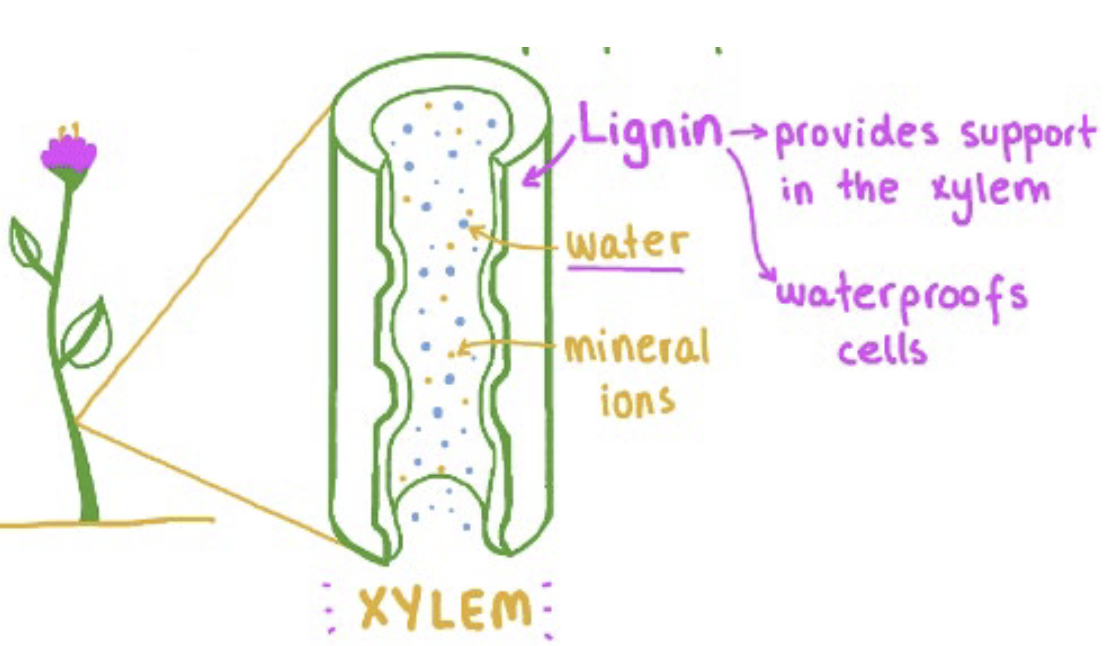
How was the challenge of reproducing in dry enviornments to the terrestrial environment remedied?
Alternation of Generations, provides two moile phases. Two multicellular generations alternate (Haploid gametophyte, diploid sporophyte). Single haploid cells intermediate (Haploid gametes, haploid spores)
What are some uses of fungi in the world?
Yeast - Bread and beer, some are antibiotics, others are important decomposers
What percentage of fungi are pathogens
30%
What are some examples of fungi as pathogens?
Corn smut, cordyceps, white nose in bats, ringworm
What does the plant and fungus benefit from in a mycorrhizal relationship?
The plant gets nutrients and water, the fungus gets carbon
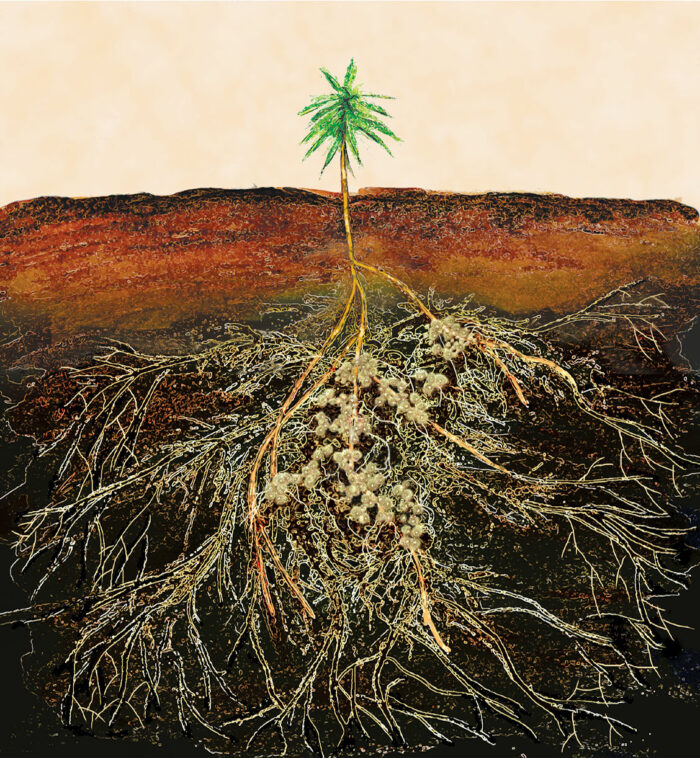
What does the photobiont and fungus benefit from in a mutualistic relationship?
The photobiont gets protection, and the fungus gets carbon and nitrogen.
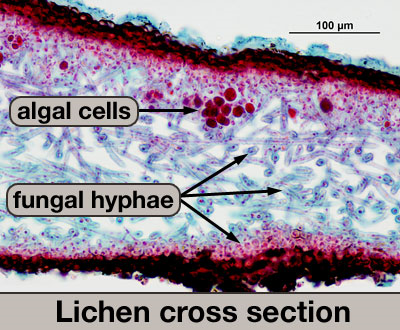
What are the steps in the alteration of generations?
Mitosis (N) → Gametophyte (N) → Gametes (N) → Fusion (2N) → Zygote (2N) → Mitosis → Sporophyte (2N) → Meiosis (2N) → Spores (N)
What is an advantage of alternation of generations?
Two mobile stages (gametes and spores), which means two opportunities for dispersal
Are gametes identical or genetically different?
Gametes are identical because they form through mitosis
Are spores identical or genetically different?
Spores are genetically different because they form through meiosis.
What is a benefit of the dispersal of spores?
It contributes more to population diversity
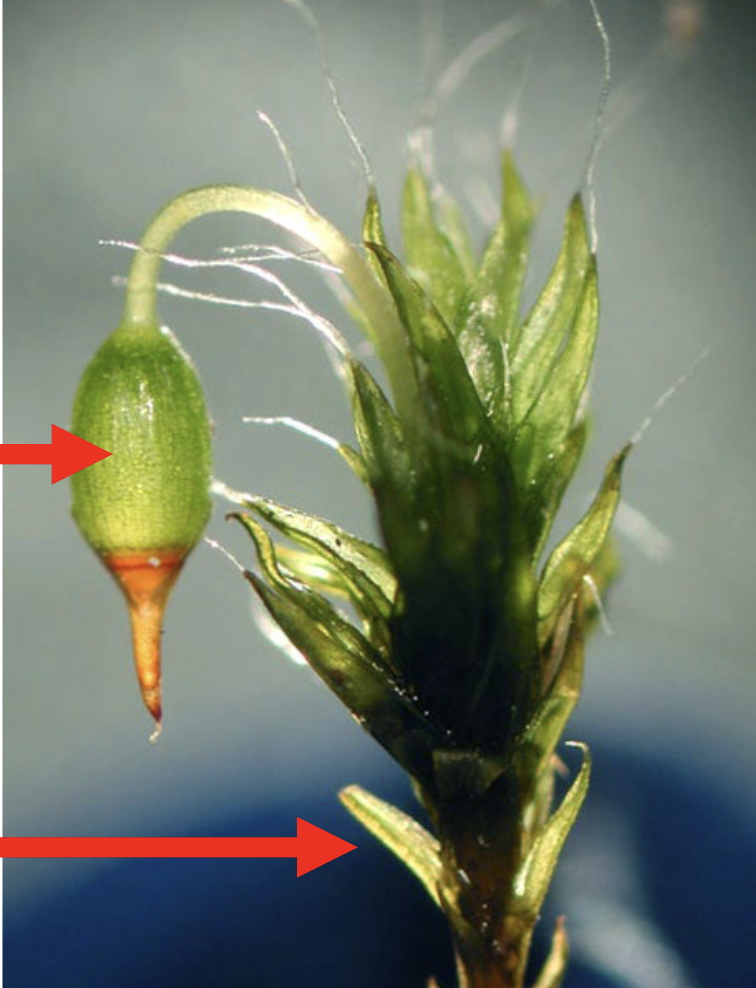
What is the top arrow pointing to?
Sporophyte
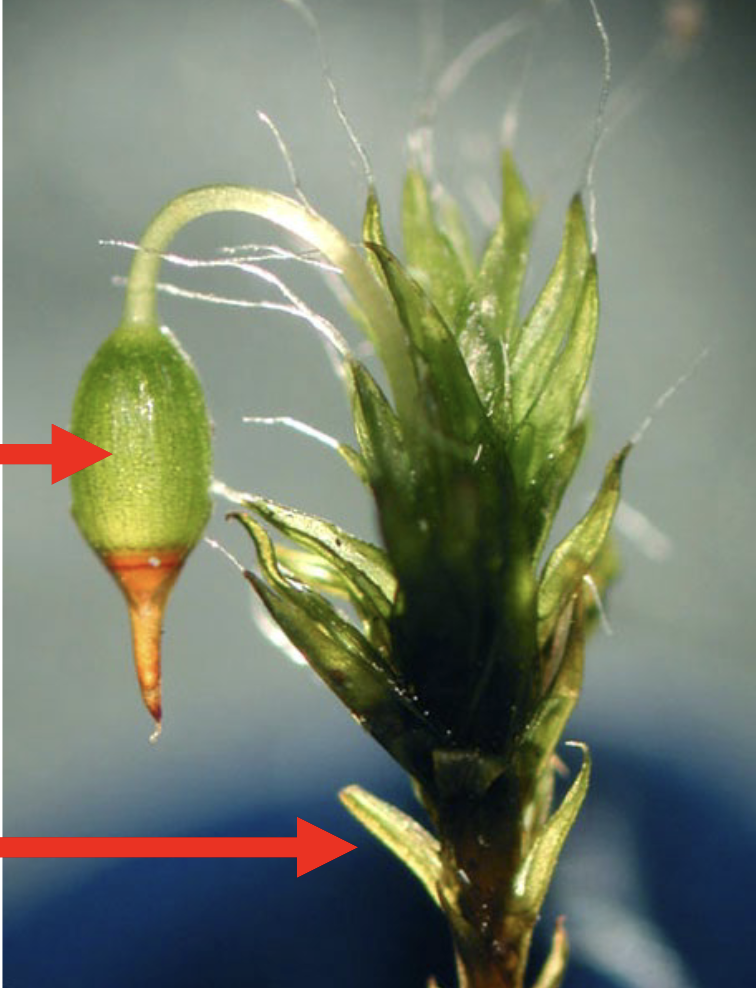
What is the bottom arrow pointing to?
Gametophyte
As gametophytes get smaller…
…plant reproduction is more dependent on the sporophyte
As sporophytes get larger…
…plant reproduction becomes more independent
______ becomes small and protected within the _______
Gametophytes, sporophyte
______ transfer will not require water
Gamete
What are characteristics of Bryophytes?
Nonvascular, seedless
What are characteristics of ferns and fern allies?
Vascular, seedless
What are characteristics of Gymnosperms?
Vascular, “naked seeds”
What are characteristics of Angiosperms?
Vascular, “covered” seeds (think fruits)
What phylums/plants are included in nonvascular plants?
Mosses (Phylum Bryophyta), Liverworts (Phylum Hepaticophyta), Hornworts
What do nonvascular plants contain/not contain?
Does not contain “true” vascular tissue, no lignin, true roots, stems, or leaves
What is dominant in the bryophyte?
Gametophyte, (larger, lives longer, and contributes the most resources)
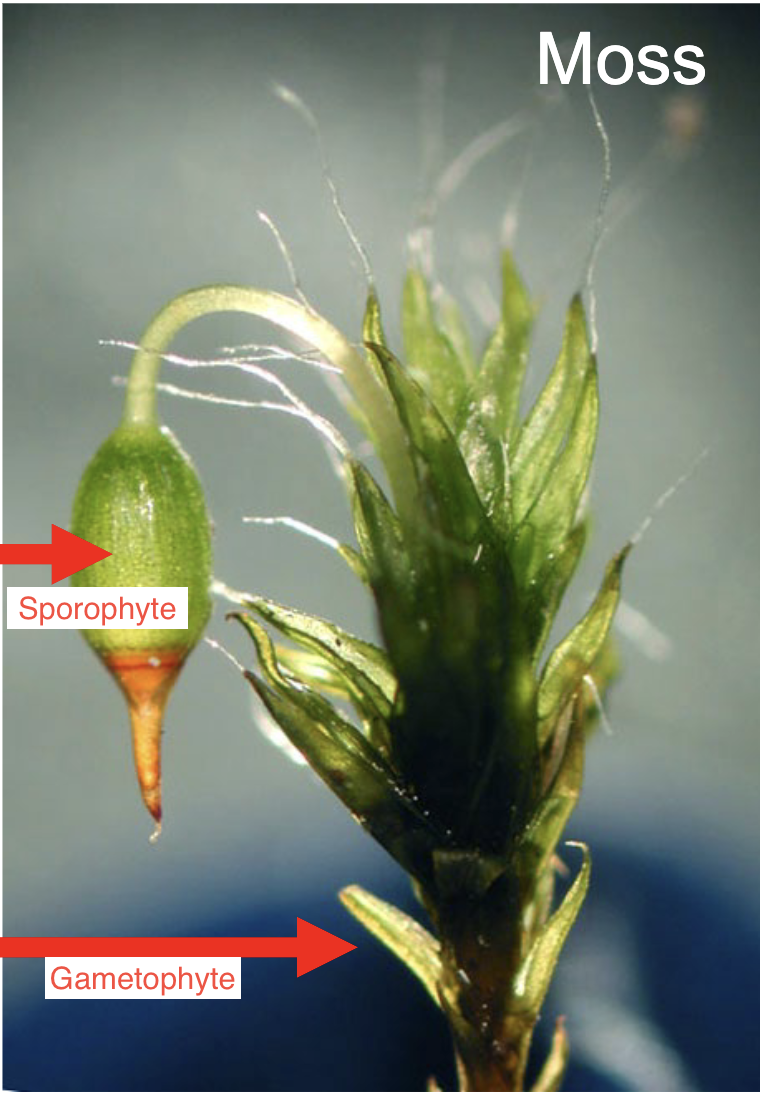
Where are gametes produced?
Gametes are produced in gametangia on the gametophyte, allows for protection against the harsh environment.
What does moss Antheridia produce?
Sperm
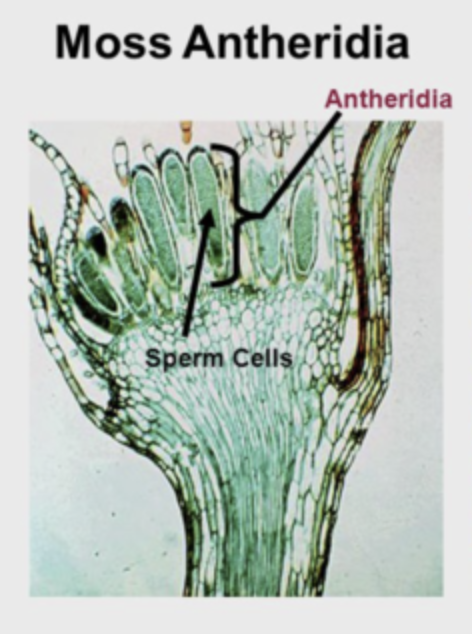
What does moss Archegonia produce?
Eggs
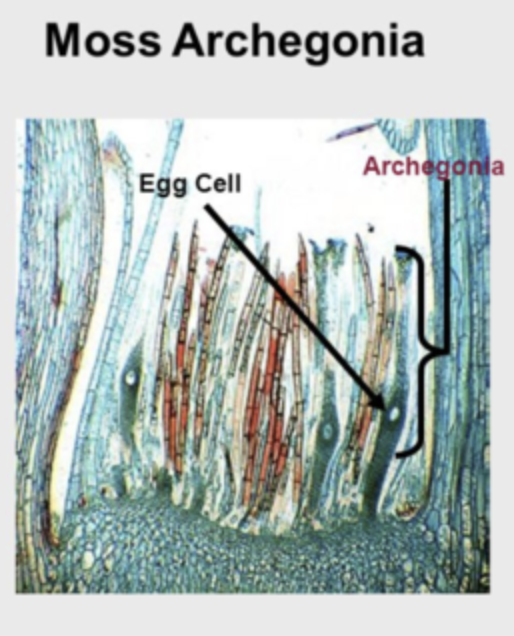
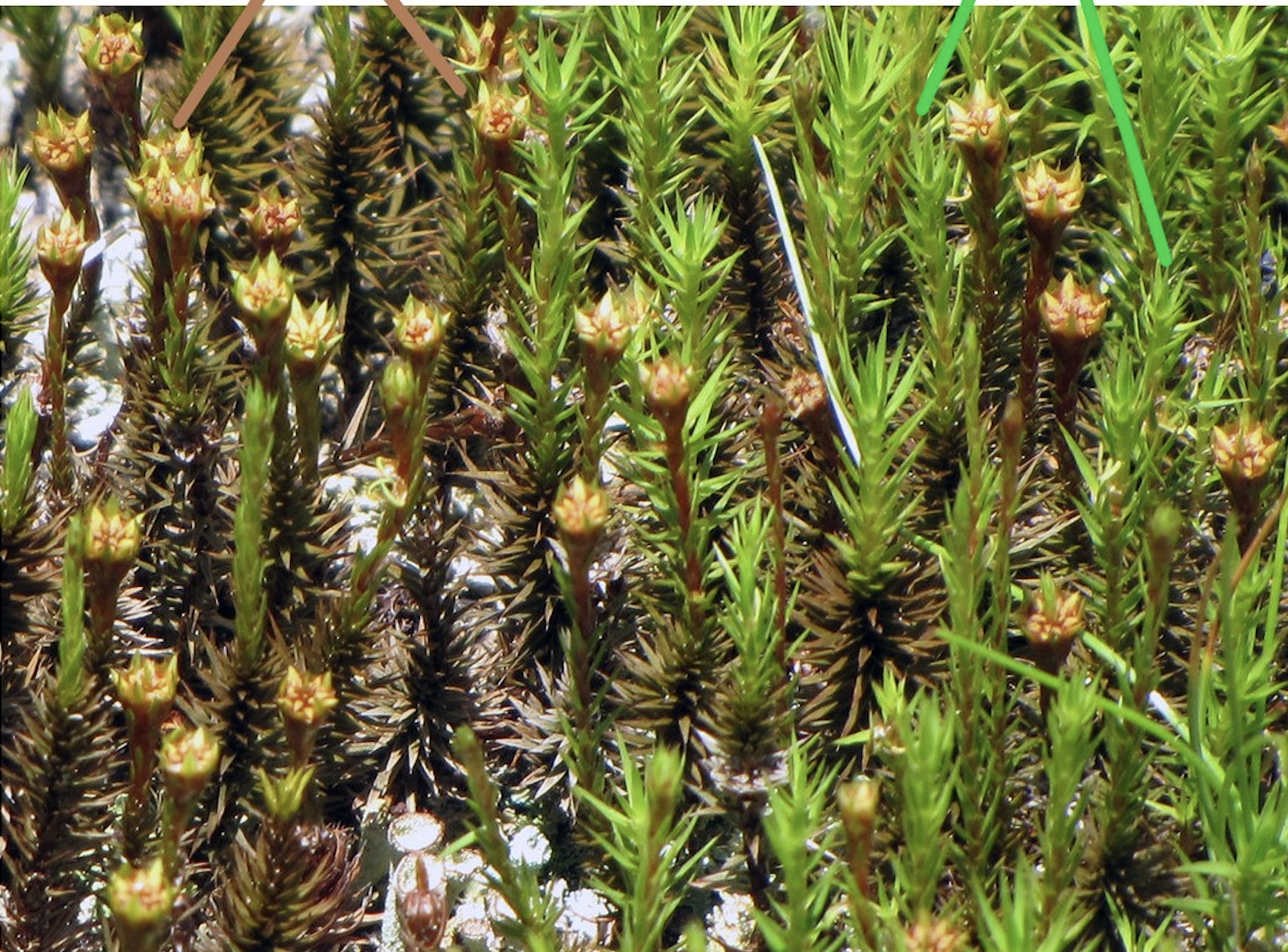
What are the brown lines pointing to?
Male gametophytes in moss.
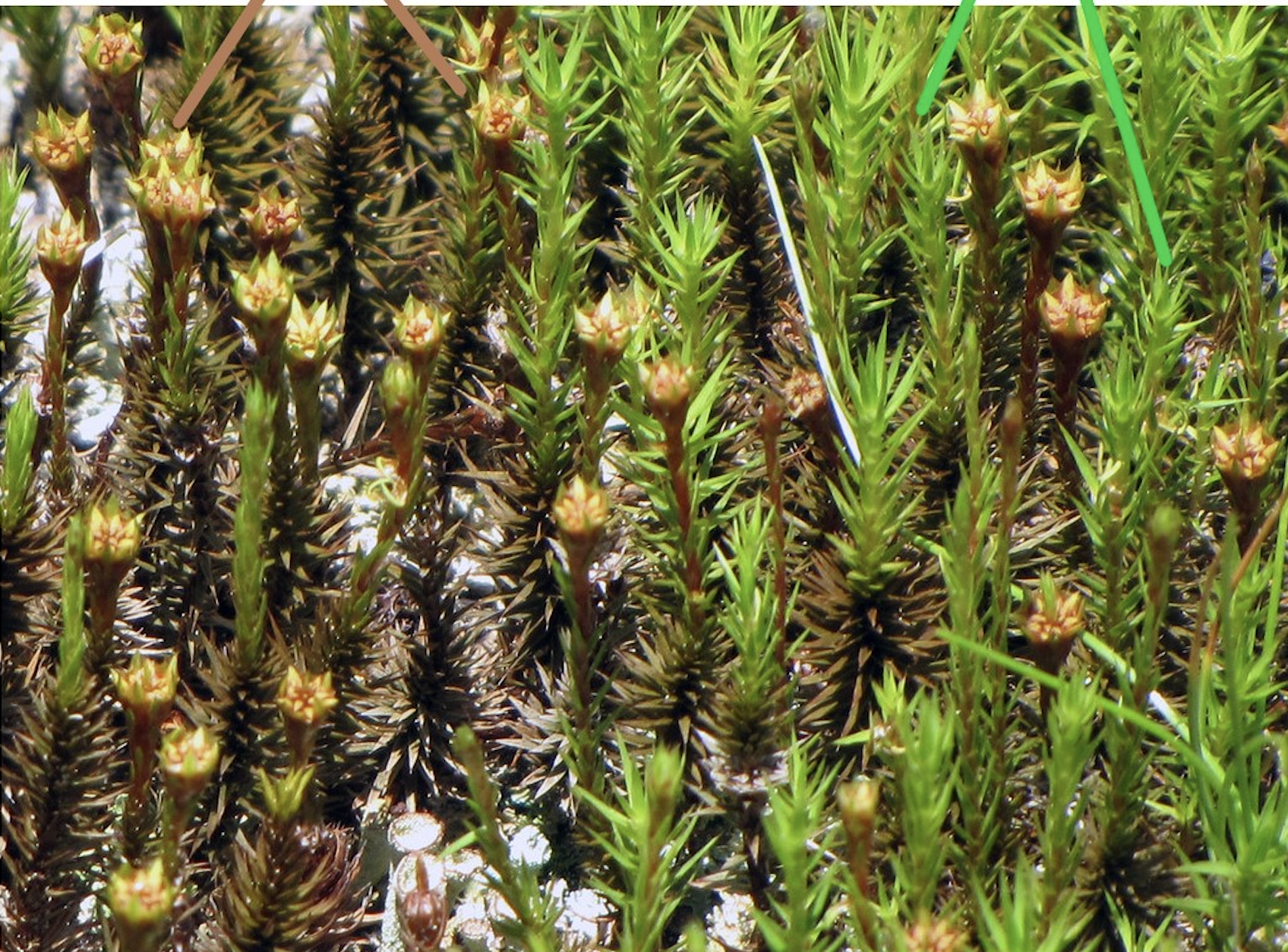
What are the green lines pointing to?
Female gametophytes in moss.
How do gametes transfer in mosses?
Flagellated sperm must swim from the antheridia on the male gametophyte to the archegonia on the female gametophyte using rain/dew/etc.
What plants does Phylum Bryophytes contain?
Mosses
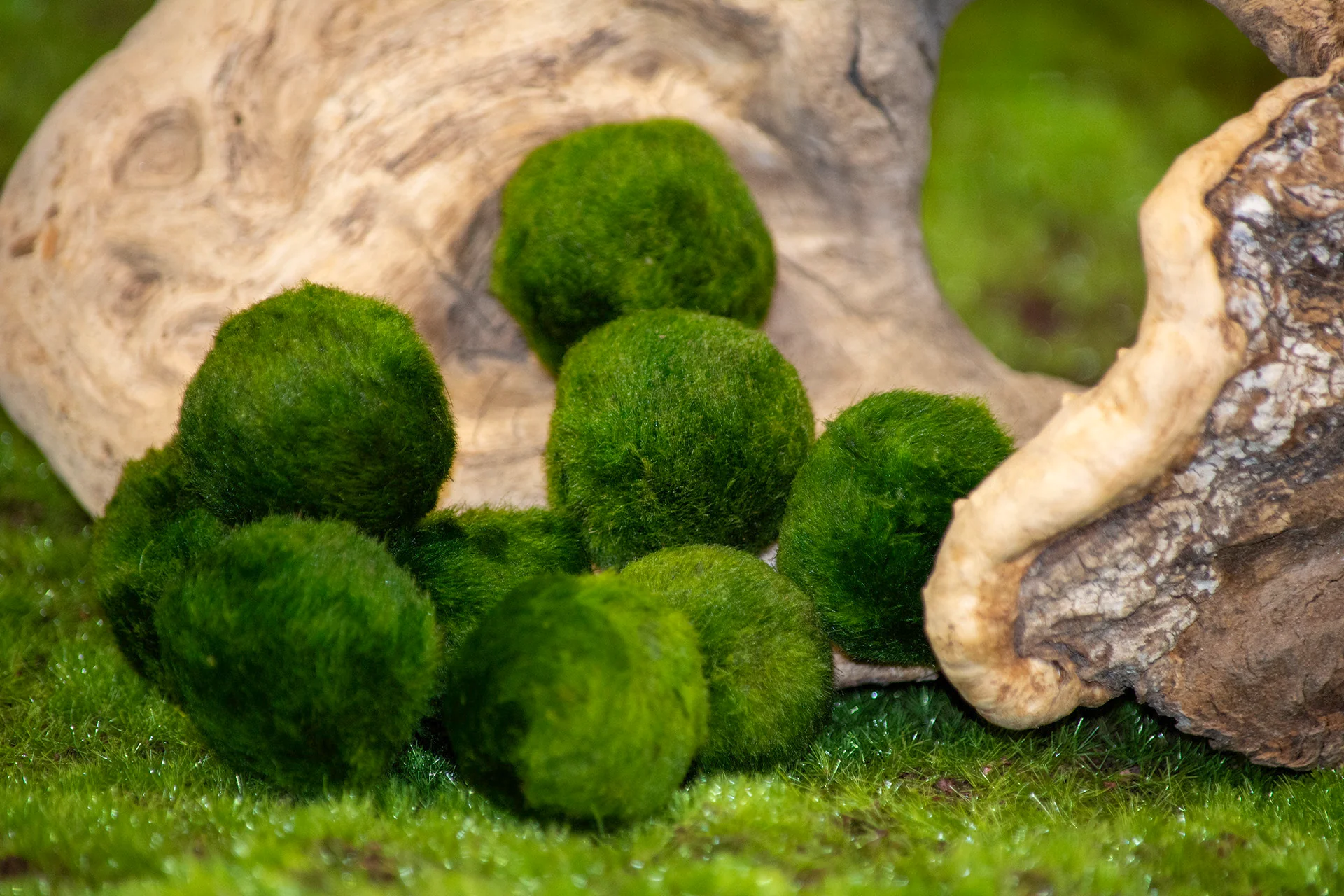
What plants does Phylum Hepaticophytes contain?
Liverworts
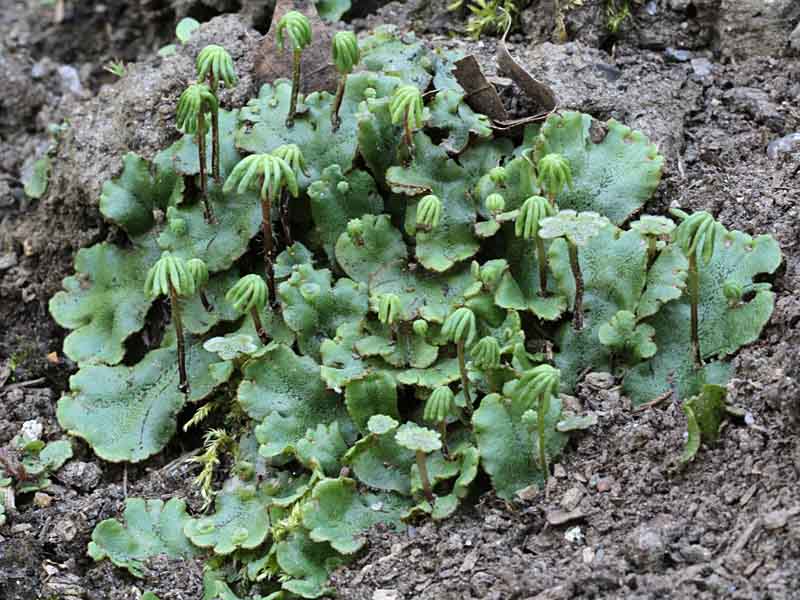
What plants does Phylum Anthocerophytes contain?
Hornworts
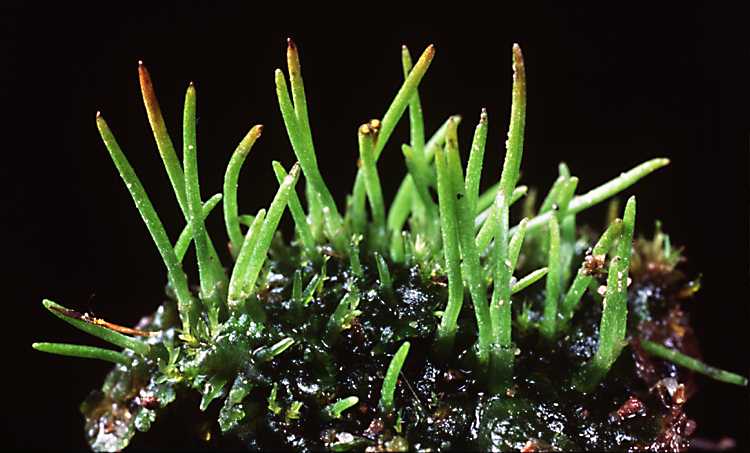
Bryophytes, hepaticophytes, and anthocerophytes are all examples of…
… Seedless, nonvascular plants
What do seedless vascular plants contain?
Vascular tissue, which contains lignin, true roots, true stems, and true leaves, can move water and nutrients.
What phylums/plants are included in seedless vascular plants?
Phylum Lycophyta, Phylum Psilotophyta, Phylum Pteridophyta, and Phylum Equisetophyta
What plants are included in Phylum Lycophyta?
Club mosses
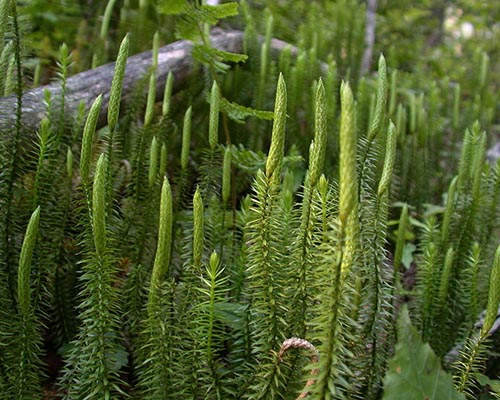
What plants are included in Phylum Psilotophyta?
Whisk ferns
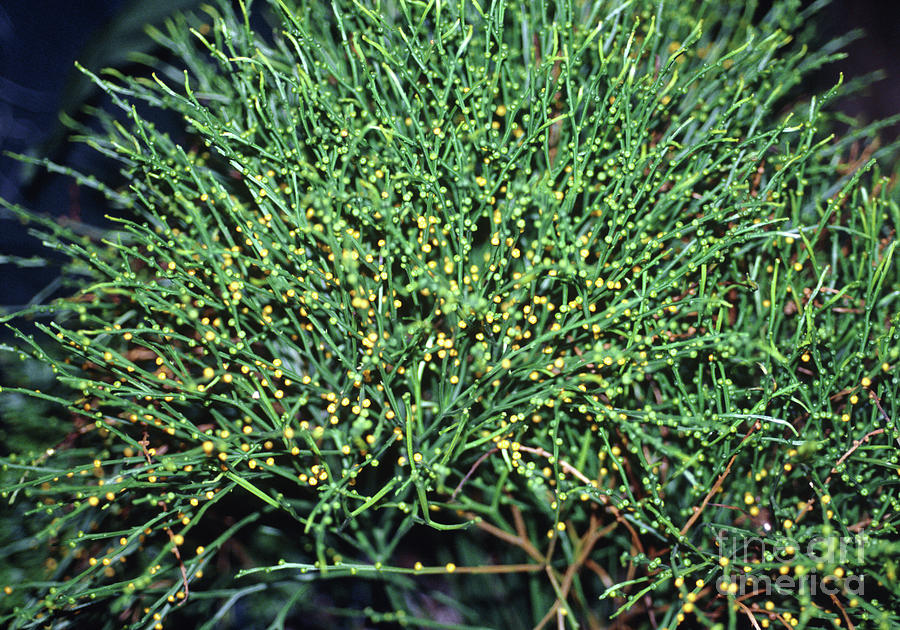
What plants are included in Phylum Pteridophyta?
Ferns
